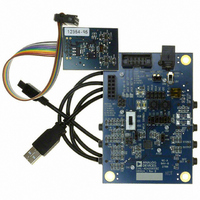EVAL-ADAU1761Z Analog Devices Inc, EVAL-ADAU1761Z Datasheet - Page 36

EVAL-ADAU1761Z
Manufacturer Part Number
EVAL-ADAU1761Z
Description
Eval Board For ADAU1761
Manufacturer
Analog Devices Inc
Series
SigmaDSP®r
Specifications of EVAL-ADAU1761Z
Main Purpose
Audio, CODEC
Embedded
Yes, DSP
Utilized Ic / Part
ADAU1761
Primary Attributes
Stereo, 24-Bit, 8 ~ 96 kHz Sampling Rate, GUI Tool
Secondary Attributes
I²C and GPIO Interfaces, 2 Differential and 1 Stereo Single-Ended Analog Inputs and Outputs
Silicon Manufacturer
Analog Devices
Core Architecture
SigmaDSP
Silicon Core Number
ADAU1761
Silicon Family Name
SigmaDSP
Application Sub Type
Audio
Lead Free Status / RoHS Status
Lead free / RoHS Compliant
Available stocks
Company
Part Number
Manufacturer
Quantity
Price
Company:
Part Number:
EVAL-ADAU1761Z
Manufacturer:
Analog Devices Inc
Quantity:
135
ADAU1761
HEADPHONE OUTPUT
The LHP and RHP pins can be driven by either a line output
driver or a headphone driver by setting the HPMODE bit in
Register R30 (playback headphone right volume control register,
Address 0x4024). The headphone outputs can drive a load of at
least 16 Ω.
Separate volume controls for the left and right channels range
from −57 dB to +6 dB. Slew can be applied to all the playback
volume controls using the ASLEW[1:0] bits in Register R34
(playback pop/click suppression register, Address 0x4028).
Capless Headphone Configuration
The headphone outputs can be configured in a capless output
configuration with the MONOOUT pin used as a dc virtual
ground reference. Figure 45 depicts a typical playback path in
a capless headphone configuration. Table 19 lists the register
settings for this configuration. As shown in this table, the
MONOOUT pin outputs common mode (AVDD/2), which
is used as the virtual headphone reference.
Table 19. Capless Headphone Register Settings
Register
R36
R22
R24
R28
R33
R29
R30
Figure 45. Capless Headphone Configuration Diagram
RIGHT
LEFT
DAC
DAC
Bit Name
DACEN[1:0]
MX3EN
MX3LM
MX4EN
MX4RM
MX7EN
MX7[1:0]
MONOM
MOMODE
LHPVOL[5:0]
LHPM
HPMODE
RHPVOL[5:0]
RHPM
MX3LM
MX4RM
MX7[1:0]
MIXER 3
MIXER 7
MIXER 4
MX3EN
MX7EN
MX4EN
Setting
11 = both DACs on
1 = enable Mixer 3
1 = unmute left DAC input
1 = enable Mixer 4
1 = unmute right DAC input
1 = enable Mixer 7
00 = common-mode output
1 = unmute mono output
1 = headphone output
Desired volume for LHP output
1 = unmute left headphone output
1 = headphone output
Desired volume for RHP output
1 = unmute right headphone output
LHPVOL[5:0]
RHPVOL[5:0]
MOMODE
MONOM
LHP
MONOOUT
RHP
Rev. C | Page 36 of 92
Headphone Output Power-Up/Power-Down Sequencing
To prevent pops when turning on the headphone outputs, the
user must wait at least 4 ms to unmute these outputs after
enabling the headphone output with the HPMODE bit. This is
because of an internal capacitor that must charge before these
outputs can be used. Figure 46 and Figure 47 illustrate the
headphone power-up/power-down sequencing.
For capless headphones, configure the MONOOUT pin before
unmuting the headphone outputs.
Ground-Centered Headphone Configuration
The headphone outputs can also be configured as ground-
centered outputs by placing coupling capacitors on the LHP
and RHP pins. Ground-centered headphones should use the
AGND pin as the ground reference.
When the headphone outputs are configured in this manner,
the capacitors create a high-pass filter on the outputs. The
corner frequency of this filter, at which point its attenuation
is 3 dB, is calculated by the following formula:
where:
C is the capacitor value.
R is the impedance of the headphones.
For a typical headphone impedance of 16 Ω and a 47 μF
capacitor, the corner frequency is 211 Hz.
RHPM AND LHPM
RHPM AND LHPM
0 = LINE OUTPUT
f
1 = HEADPHONE
3dB
PRECHARGE
= 1/(2π × R × C)
1 = UNMUTE
INTERNAL
HPMODE
0 = MUTE
Figure 47. Headphone Output Power-Down Timing
HPMODE
Figure 46. Headphone Output Power-Up Timing
USER DEFINED
4ms
DEFINED
USER





















